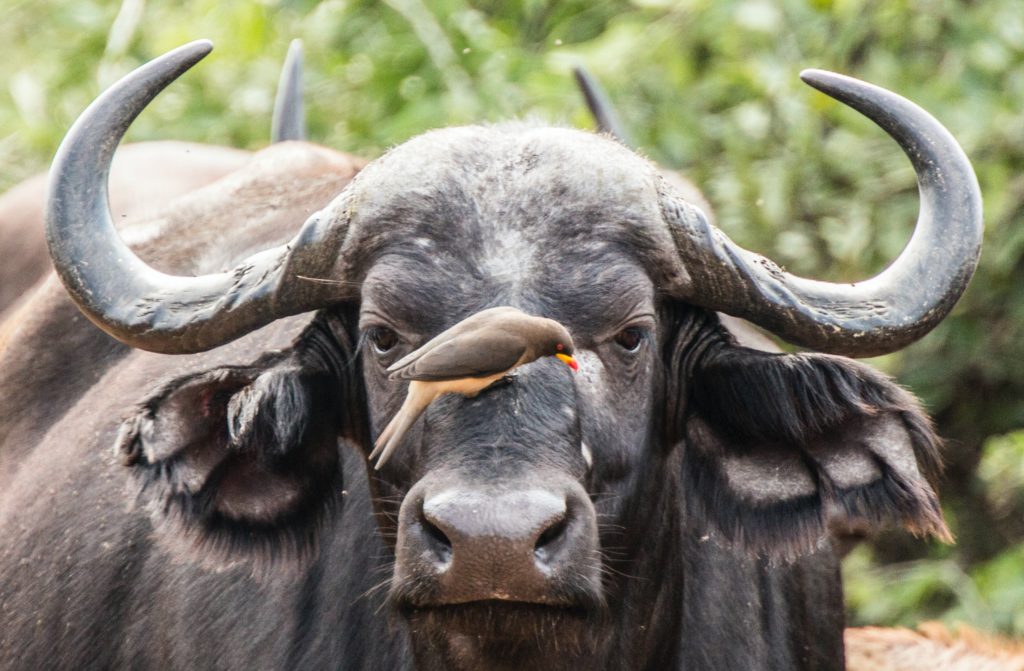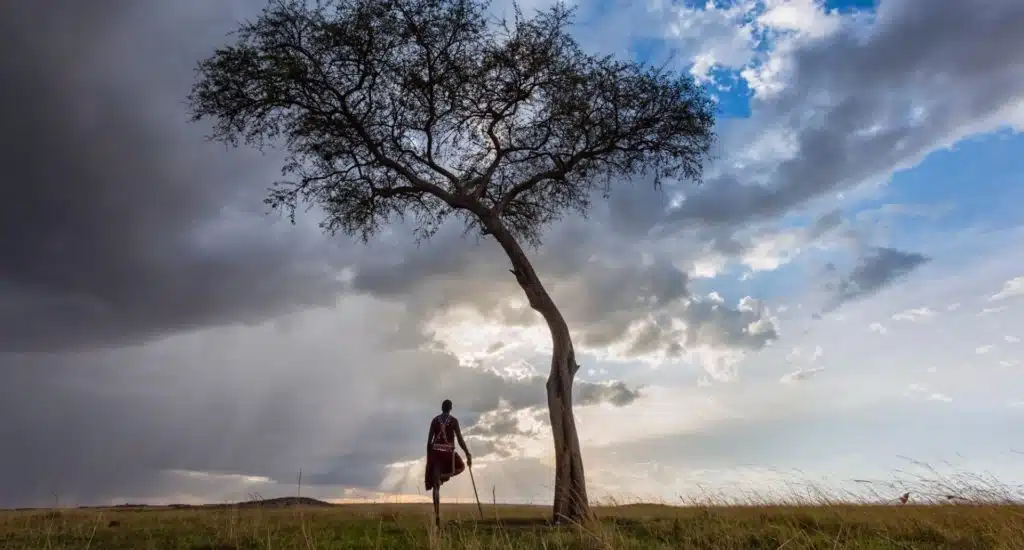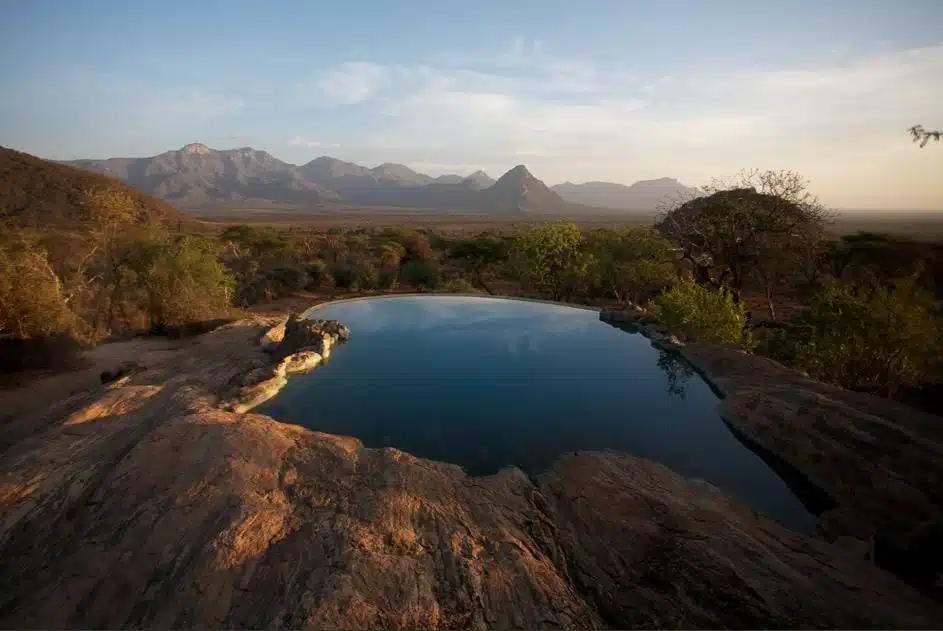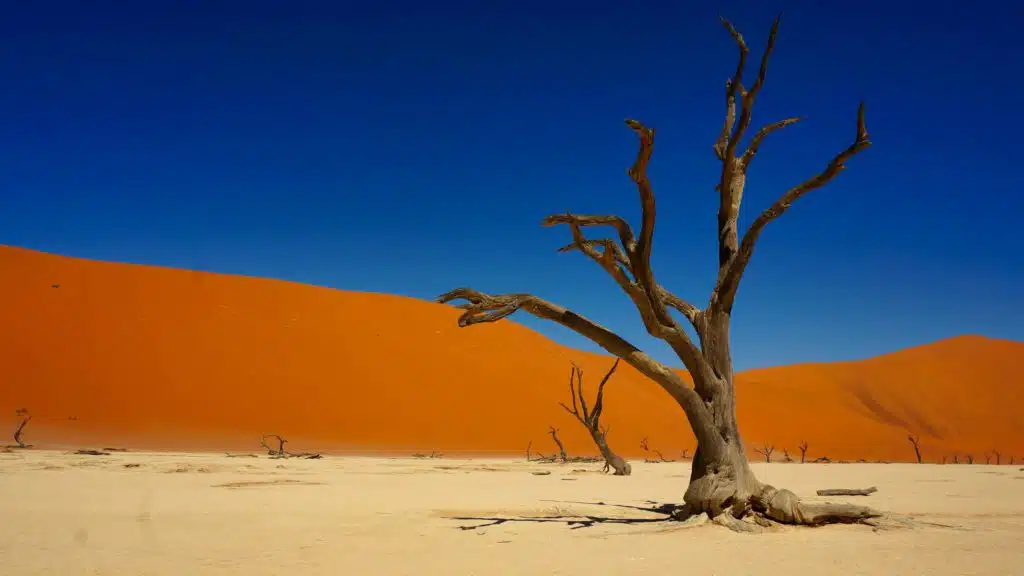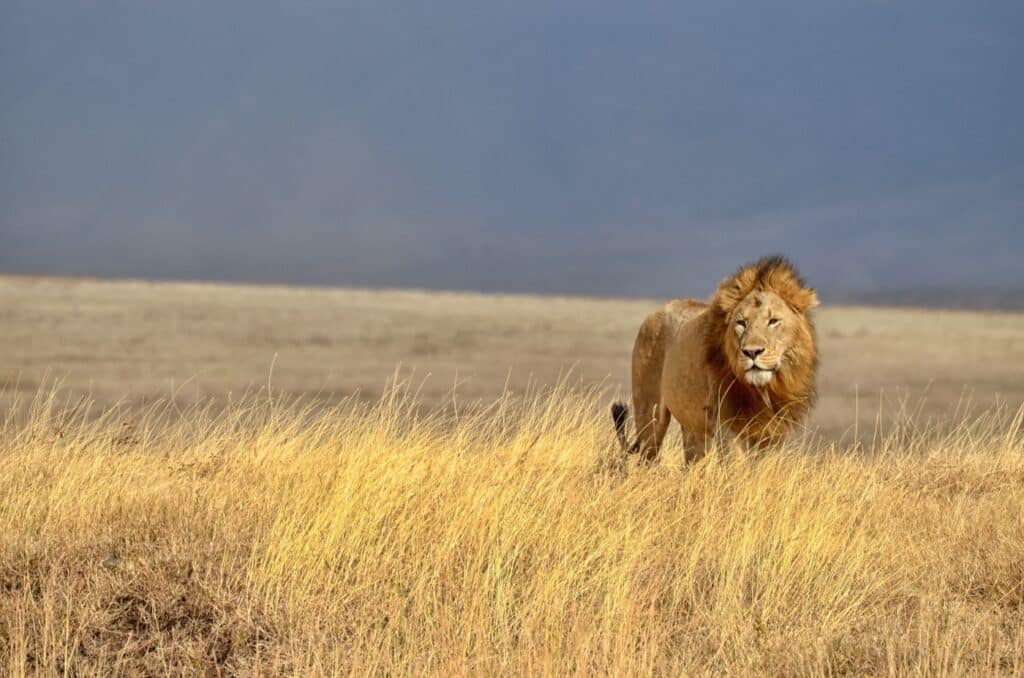AFRICA’S CELEBRITIES
The Big Five, & Where to Find Them
The inception of the Big Five has a history that is somewhat less than favourable.
First coined by early colonials in the late-1800s, the term refers to a handful of iconic African creatures: the African elephant, the Cape buffalo, the black rhino, the lion and the leopard. But rather than referring to the splendour of these wonderful, powerful animals, ‘the Big Five’ were deemed those most difficult to hunt and kill.
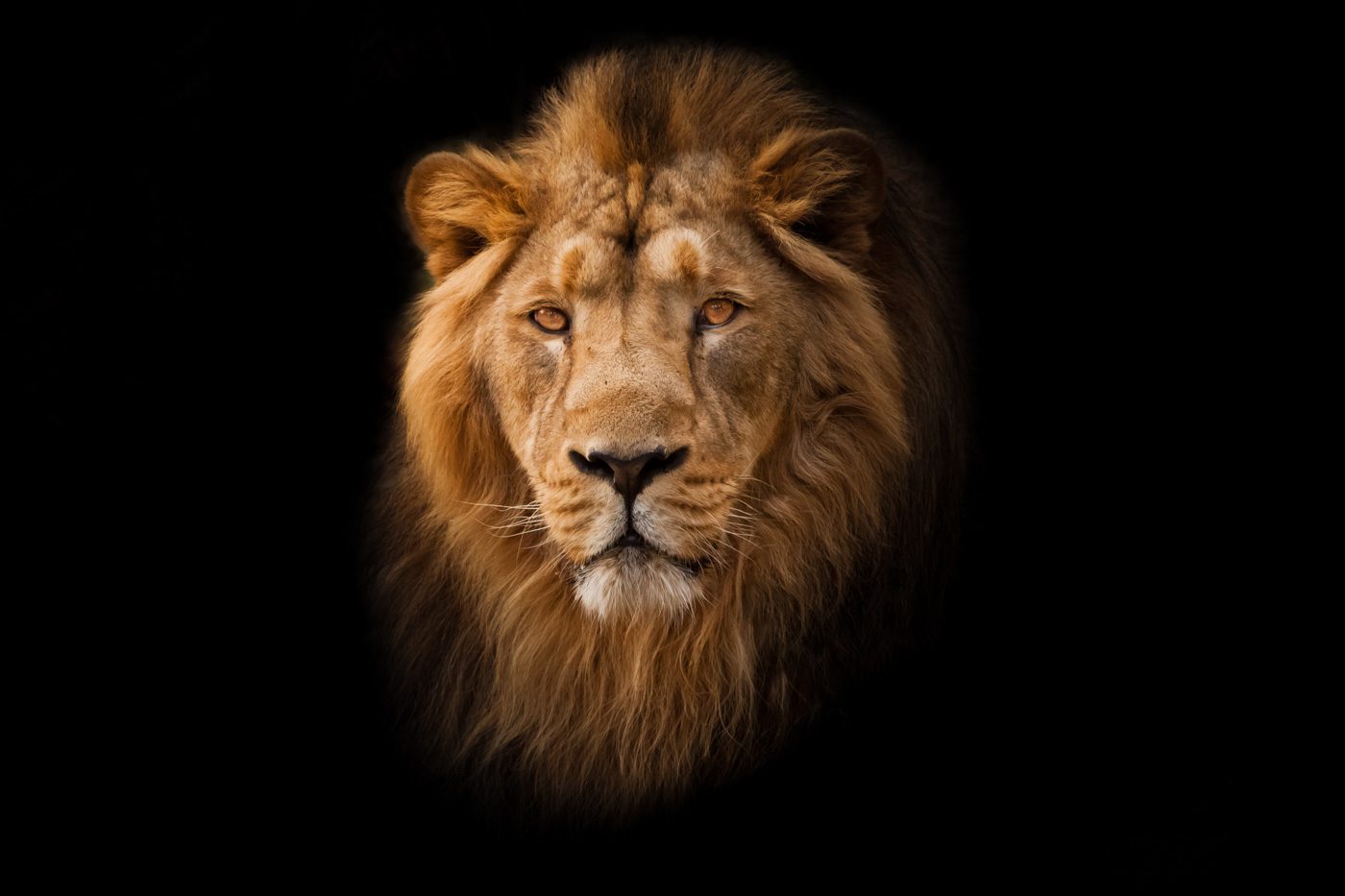
For almost a century, their populations were decimated by big game hunters searching to bolster their bravado and massage their ego, but agriculture and colonial farming practices, poaching for souvenirs, Eastern medicines and furnishings, and other western demands also played significant part in the dwindling of these species’ numbers.
Thankfully, we have evolved since those archaic and naïve times, and the Big Five have found their place alongside other African animals as precious, fragile and in need of our protection and respect. Populations have increased, rangers safeguard them and almost the only shooting done of these spectacular beasts is done through a 300mm telephoto lens.
Though the threat of extinction is dwindling, their numbers remain fragile, and an African safari does not guarantee five neatly-checked boxes on your list of animals seen.
While there are also many more wonderful animals to see throughout Africa, here are some facts about Africa’s Big Five, including the best locations and times to see them:
Big Five #1: The Black Rhino
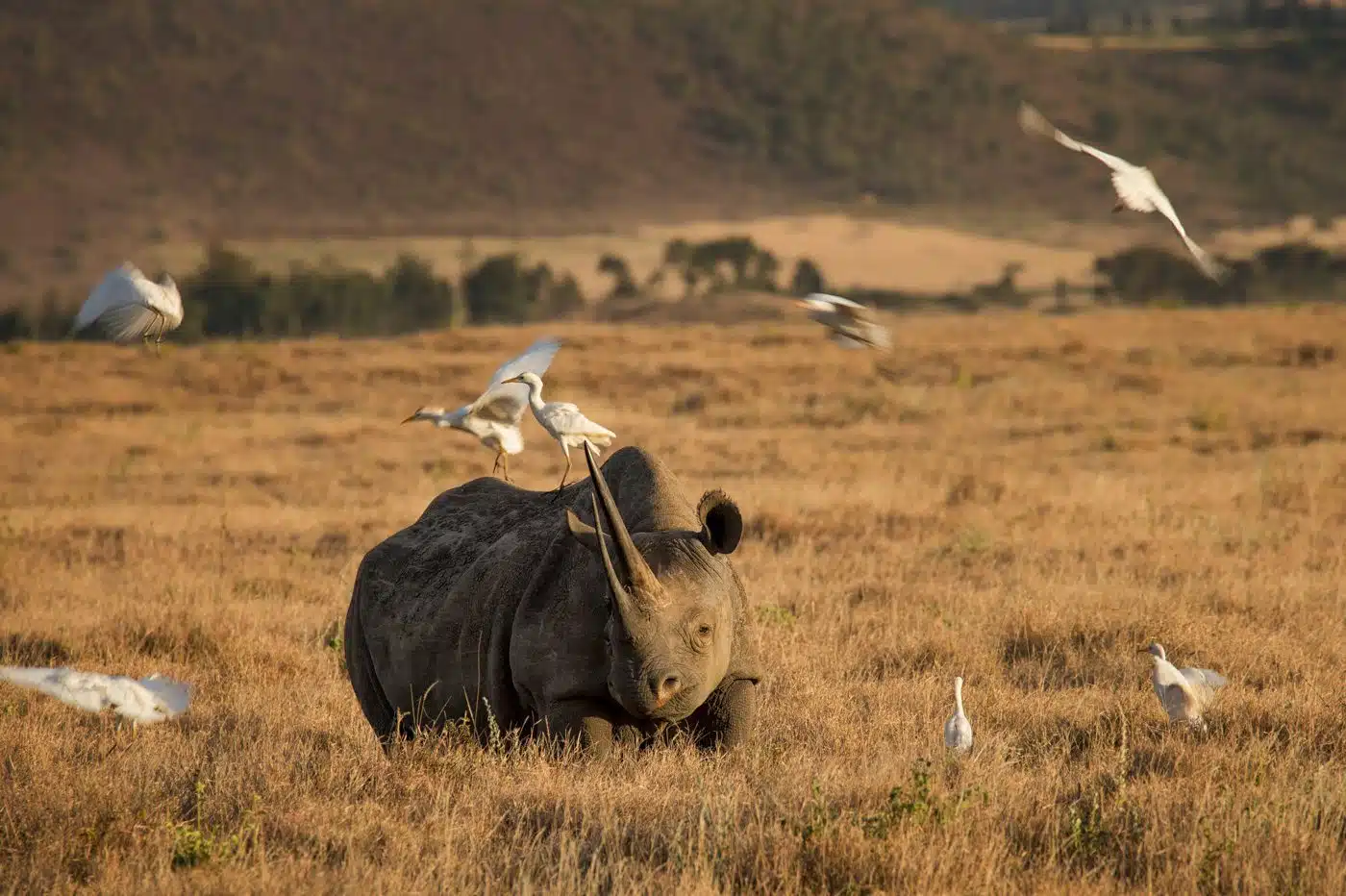
There are several species of rhino, from the comparatively tiny Sumatran to the more familiar black and white of Africa, as well as subspecies within these. The black rhino, despite its name, is often no more black than its monochromatic opposite. The name actually stems from the shape of its lips; the black rhino has a narrower, pointed and semi-prehensile upper lip, while the white rhino has a square, ‘wide’ upper lip, and it is this that has resulted in the name, ‘wide’ – or the Afrikaans, ‘weit’ – misinterpreted and misunderstood forever more as ‘white’.
Black rhinos have incredibly poor vision, and they have been known to attack trees and rocks, thinking them to be a foe or male adversary. The most endangered of the five, their horn is falsely believed to possess medicinal qualities and is also used for various artifacts, such as knife handles.
The Black rhino remains on the critically endangered list, and their lethargic tendency towards procreation is not assisting their fate, but the world is rallying for the species’ protection and, with a little luck, they will slowly plod their way back from the brink of extinction.
Best Place to See Black Rhinos: Ninety-eight percent of Black Rhinos live in four countries: South Africa, Namibia, Zimbabwe, and Kenya. Of these, Namibia’s Etosha National Park is often regarded as one of the best locations, though rhino can also be very conveniently and numerously found in Nairobi and Kruger National Parks, the Ngorongoro Crater and other destinations.
Best Time to See Black Rhinos: Though they often roam from one place to another, preferring shade through the heat of the day and seeking out waterholes, they remain fairly consistently within the same region or territory year-round. An expert guide will often know exactly where to find them and when.
Big Five #2: The Lion
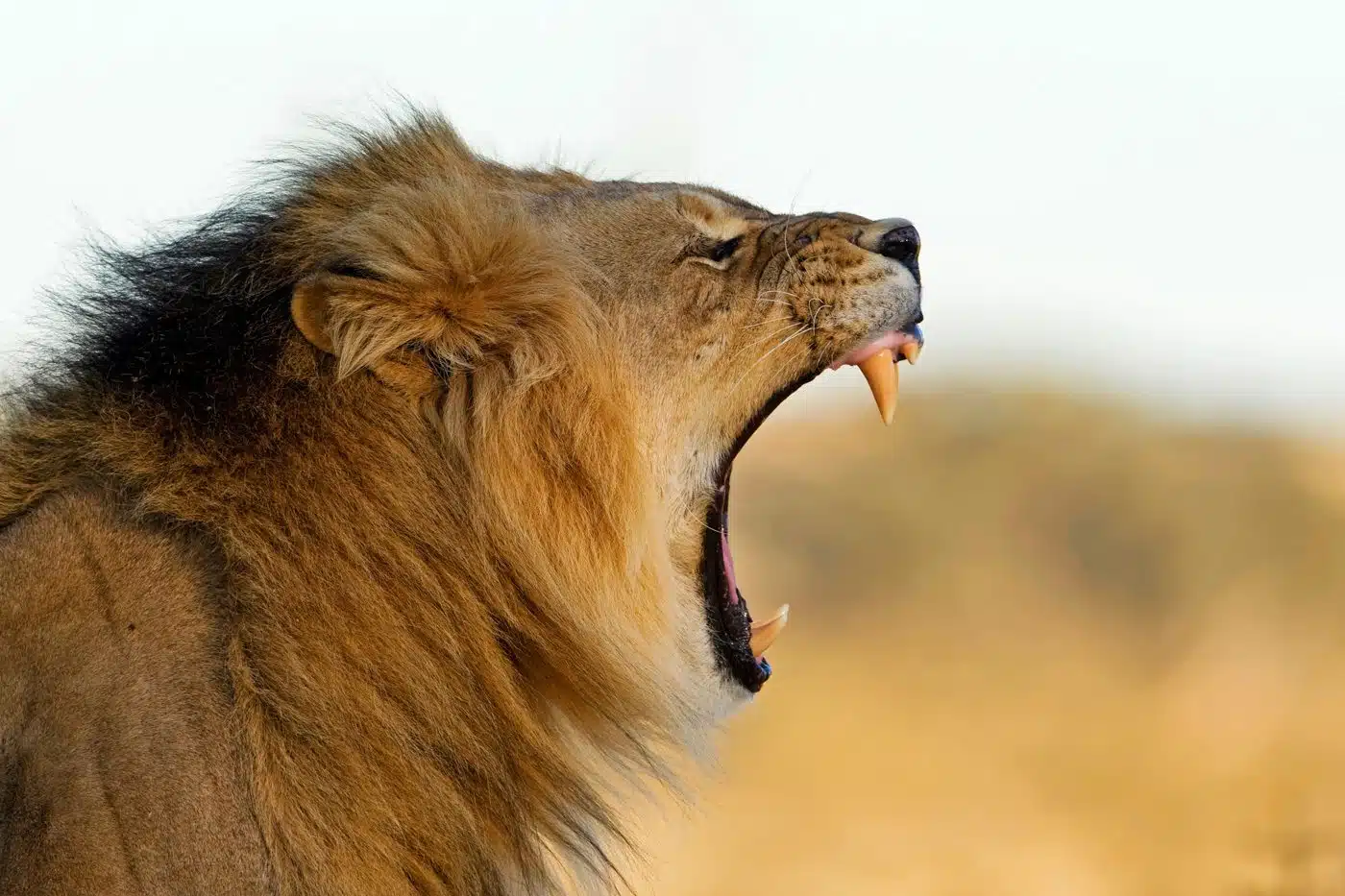
Lions are synonymous with an African safari, perhaps more than any other animal. Yet their celebrity belies their true nature. While prides will have their own ‘Lion King’, this is neither hereditary nor permanent and can change at any time, with younger rogue males often vying to claim the harem for their own.
The females are very much the glue of the pride, performing the vast majority of the hunting, forming creches for their cubs and often keeping the males in line.
All lions are not the same and, though there are only two species in the world – the African and the Asiatic – there are three differing groups within Africa. For the greater part, they are the familiar lion of the pridelands, tawny in colour, the darkness of the male’s mane denoting his length of years.
However, there is a place where the lions fell down from the stars, and the white lions of Timbavati – located on the western edge of Kruger National Park – are spectacular to witness.
Though powerful predators, pound for pound, lions aren’t as strong as other big cats, preventing them from climbing trees. There are a few small prides that do venture into the treetops though, and these can be found in Queen Elizabeth National Park in Uganda, Manyara National Park in Tanzania and nowhere else, though rumours do exist of other arboreal lions across Africa.
Best Place to See Lions: It is estimated that there are 20-25,000 lions left in the wilds of Africa. This wonderful member of the Big Five is scattered across the continent and, wherever your itinerary may take you, you will likely be able to seek them out. Kruger National Park, the Maasai Mara of Kenya, Tanzania’s Serengeti and Zambia’s major parks are locations worth visiting to spot these big cats, while the watery environments of Botswana afford the opportunity to see the Kings and Queens of the Jungle which, ironically, don’t dwell in jungles.
Best Time to See Lions: Lions are equally as active year-round, but it is the cubs that hold the greatest and most adorable allure. Though lions do breed throughout the year, between February and July is generally considered the best time to view the newborns and youngsters.
Big Five #3: The African Elephant
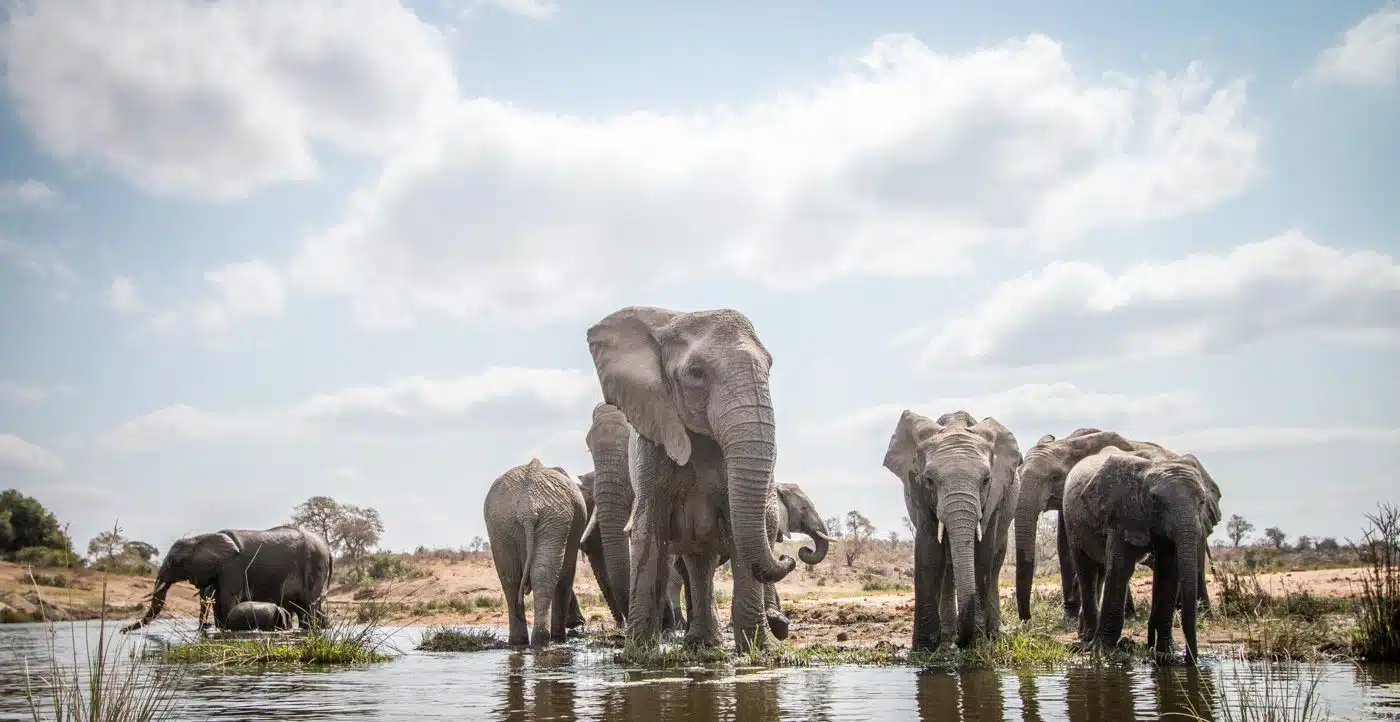
Staggeringly intelligent, exceptionally powerful, elephants are often feared by locals for their territorial ire and unquenchable appetite and thirst, which often leads them to raid villages and destroy crops.
On safari, however, they are generally considered to be fairly passive, though it is the foolish man who fails to heed their warnings. Elephants are incredibly protective of their young, and coming between a mother and calf, even when in a vehicle, can be incredibly dangerous.
Thankfully, expert guides know precisely where to view elephants from, when to stand ground and when to back away. Five tons of muscle and brawn hurtling towards you at 25 miles an hour (40km/h) is an experience best avoided at all costs.
Poached for their ivory and hunted as trophies, elephant numbers have decreased greatly, now estimated at around 400,000, but despite their diminished population, they still play a vital part in environmental sustainability, promoting plant growth, spreading seeds and fertilising the land.
Best Place to See African Elephants: It has recently been discovered that there are two subspecies of the world’s largest land animal; the savannah elephant, found in sub-Saharan countries, and the smaller jungle elephant, located in the forests of Central and West Africa. Botswana, Zimbabwe, Kenya and Zambia are regarded as the best countries to visit in search of elephants, with Botswana’s Chobe and Kenya’s Amboseli national parks the best choice of these locations.
Best Time to See African Elephants: The dry season of June to September is generally preferred for elephant viewing, with herds gathering more closely and numerously in search of water.
Big Five #4: The Leopard
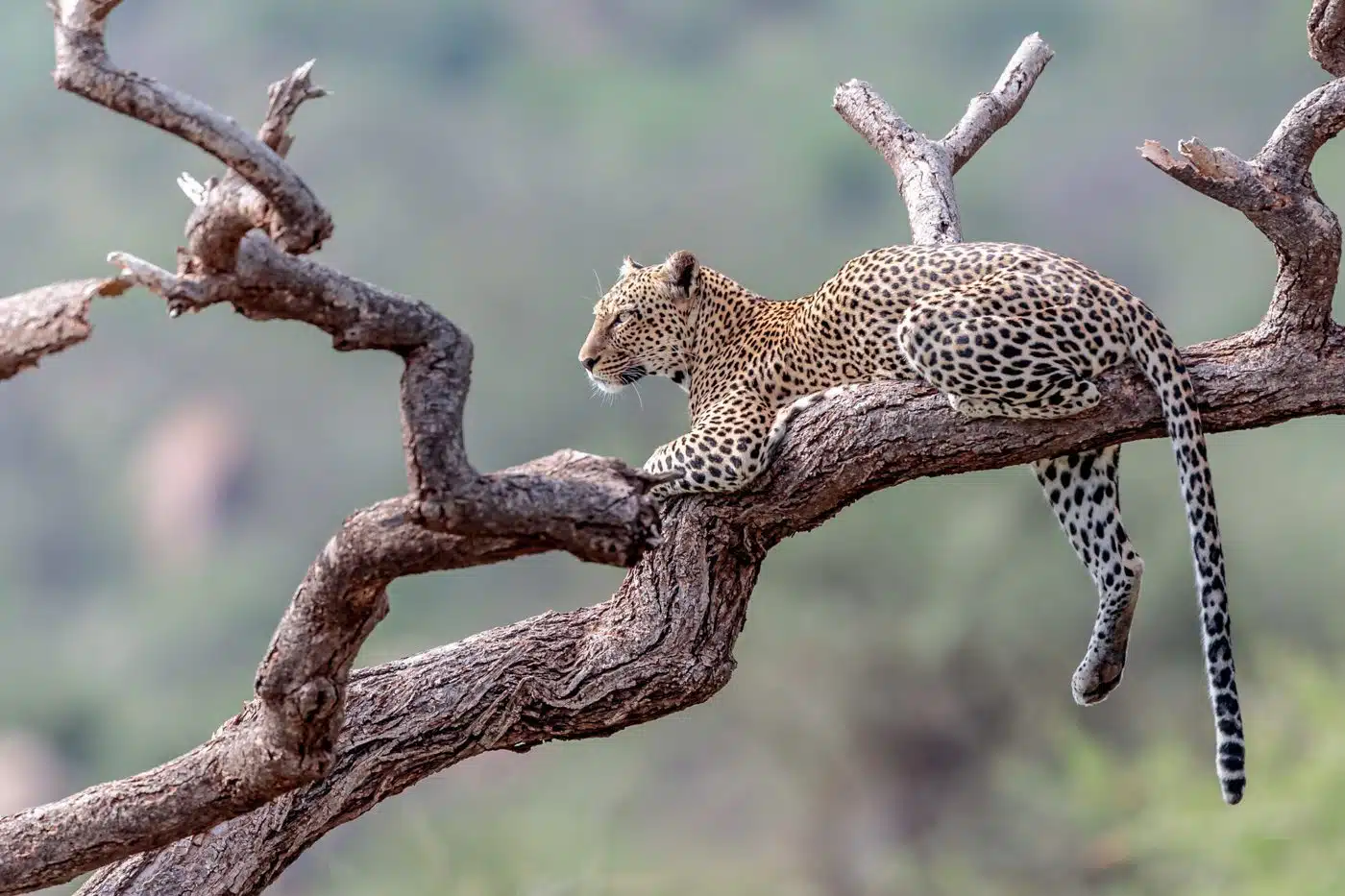
Possibly the most elusive of the Big Five, the leopard is, for most of its life, a solitary creature. Mothers hide their cubs for the first few weeks of life, and will continue to do so when they leave in search of food to feed between two and three hungry little mouths.
For their size, leopard are immensely powerful and can potentially bring down big game when necessary. However, they tend to opt for smaller prey, such as gazelles, which they can more easily haul into a tree for safe keeping away from lions, wild dogs and hyenas.
Not only do the treetops protect their meals, lion will also attack and kill a leopard if given the opportunity, so trees also offer more safety.
They are excellent swimmers and have been known to also be partial to a little seafood, including fish and crabs. Incredibly fast and agile, they are also remarkably adaptive and can be found in a wide range of habitats, despite being superbly camouflaged and hard to spot.
Best Place to See Leopards: Some leopard species, including the snow leopard, are critically endangered. The African leopard, however, is doing comparatively well, with an estimated population of 700,000. Their greatest strongholds are in Kenya and Tanzania, with the Great Migration providing a steady stream of food for them to pursue. The Serengeti, Maasai Mara and Samburu National Parks and the private reserves bordering Kruger are recommended.
Best Time to See Leopards: Leopards breed throughout the year, so for cubs, there isn’t a ‘best time’ as such. Young cubs are also hidden underground, so the chances of spotting one are slim. Dry season is, again, the best time to spot them, and the months of May to September are often suggested.
Big Five #5: Cape Buffalo
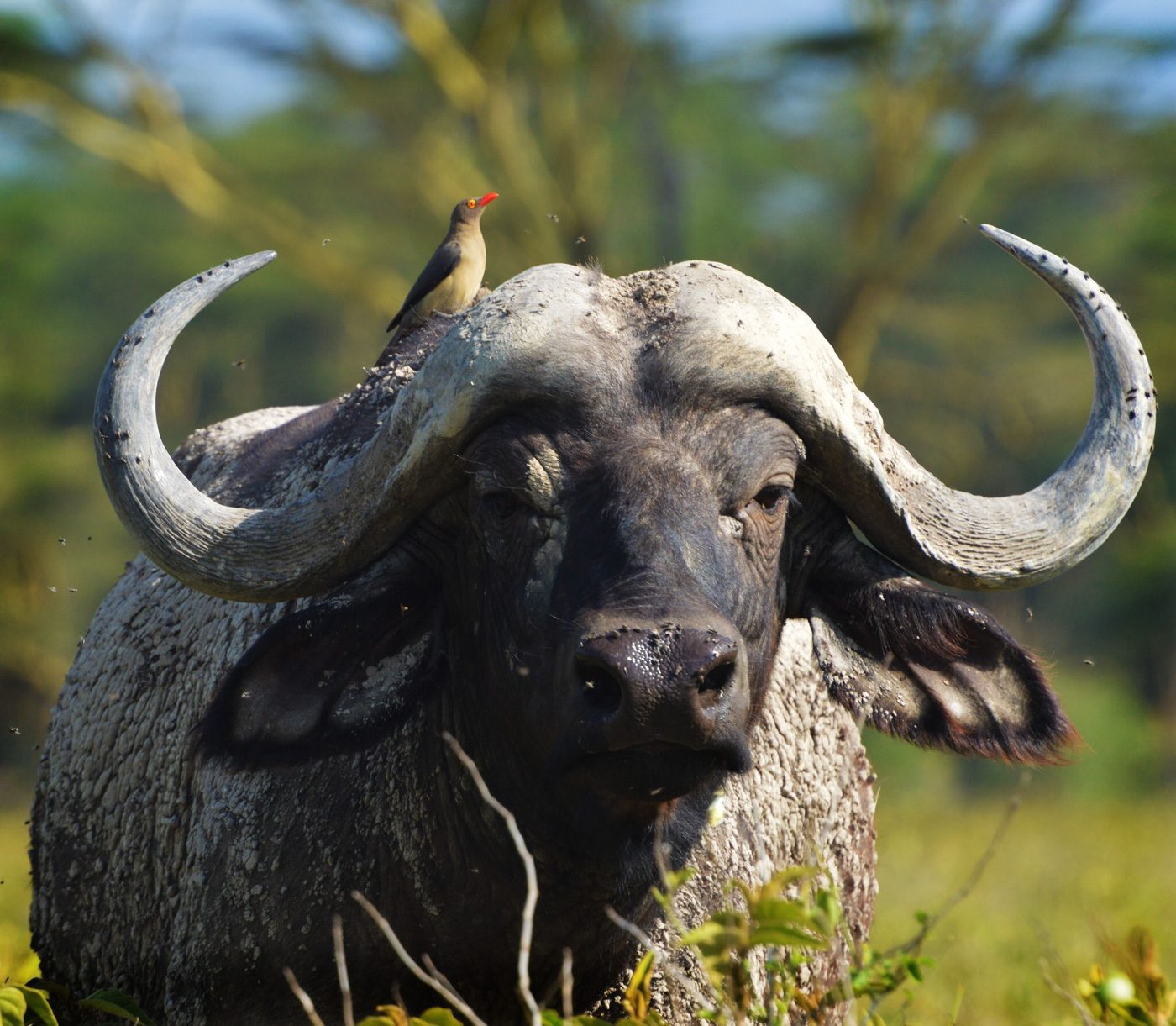
Despite being somewhat cowlike, Cape buffalo, which are not related to the similar water buffalo, join the Big Five for their ferocity, ardent loyalty to one another and their particularly bad temper.
Buffalo have been observed defending unrelated herd mates from lions – their only major predator. Mankind is their only other primary threat, and herein lies their impressive reputation. Hard to fell, fast of foot, they were incredibly difficult to hunt, but were also a force to be reckoned with. A wounded buffalo can be a terrifying thing, but they also bare a grudge.
They have been known to kill lions after the death of a fellow buffalo, and stories abound of them trampling, goring and killing hunters moments, even days after a herd member has been shot. It is for this fierce reputation that they are included in the Big Five and, indeed, were considered the hardest to kill. Thankfully, they are now plentiful, but their fearful monikers of ‘black death’ and ‘widowmaker’, still strike terror into the hearts of would-be assailants.
Best Place to See Cape Buffalo: Herds can number up to 2,000, so they are far from elusive, but there are preferable locations to view them. Sabi Sands – part of the Greater Kruger, is superb, as is Kenya’s Mara. Katavi National Park in Tanzania, and Botswana’s Chobe are also home to large herds that roam spectacular landscapes.
Best Time to See Cape Buffalo: They are prevalent year-round and can be found in significant numbers throughout the months. Buffalo gestation lasts almost a year, but breeding and birth coincide with precipitation, making the months between November and March generally the best for viewing.
The Big Five: All In
For almost one hundred years, the Big Five were slaughtered by local and visiting white hunters. Such was their abundance that Theodore Roosevelt, himself a keen hunter of the Big Five, declared that “the African elephant will never become extinct”.
A century after his death, all but the Cape buffalo are considered vulnerable or endangered – including the African elephant.
Despite this, conservation is playing an incredible role in reintroducing and repopulating the Big Five, and while climate change, continued hunting and loss of habitat remain very real threats, their continuance and survival are promising.
These efforts also make it possible for visitors to collect their quota in various locations, and clients often view and photograph all members of this elite collection in a single reserve, even – on rare occasions – on a single day.
Best Place to See The Big Five:
Sabi Sands is heralded as one of the best destinations, and the addition of superb luxury accommodations makes it a favourite of our guests.
In Botswana, Chobe is a wonderful park to spot this quintet. The Okavango is also regarded as a good destination, though the long grass and the challenge of navigating waterways diminish the possibility of viewing all five.
In Kenya, Lewa Conservancy and Samburu county are home to significant populations of all five, and their slightly smaller area makes game drives more convenient and abundant.
Finally, Tanzania hosts the five in various regions, particularly the vast Serengeti and the unique Ngorongoro ecosystem.
Best Time to See the Big Five:
Navigating rainy seasons, considering the five species’ birthing times, and taking into account the needs of a greater itinerary, it is challenging to define a specific time of year to see the Big Five. Between February and June, the chances of not only seeing all five, but also being able to observe youngsters, the big cats on the hunt and abundant herds of the elephant and buffalo are at their best.
There is so much to see in Africa, even beyond its variety of wonderful animals. To focus upon the Big Five alone is to diminish your overall experience of Africa, but we readily admit the appeal of the Big Five, and this can be an incredibly rewarding quarry of a larger and more diverse safari itinerary.
Discuss your desire to see the Big Five, or any other of Africa’s species, with your Travel Designer and we will all but assure your fulfilment.

